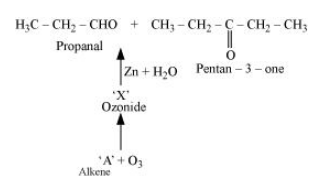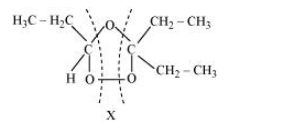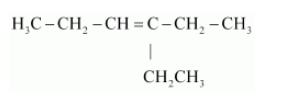Question:
Propanal and pentan-3-one are the ozonolysis products of an alkene? What is the structural formula of the alkene?
Solution:
As per the given information, propanal and pentan-3-one are the ozonolysis products of an alkene. Let the given alkene be ‘A’. Writing the reverse of the ozonolysis reaction, we get:

The products are obtained on the cleavage of ozonide ‘X’. Hence, ‘X’ contains both products in the cyclic form. The possible structure of ozonide can be represented as:

Now, ‘X’ is an addition product of alkene ‘A’ with ozone. Therefore, the possible structure of alkene ‘A’ is:

Click here to get exam-ready with eSaral
For making your preparation journey smoother of JEE, NEET and Class 8 to 10, grab our app now.
